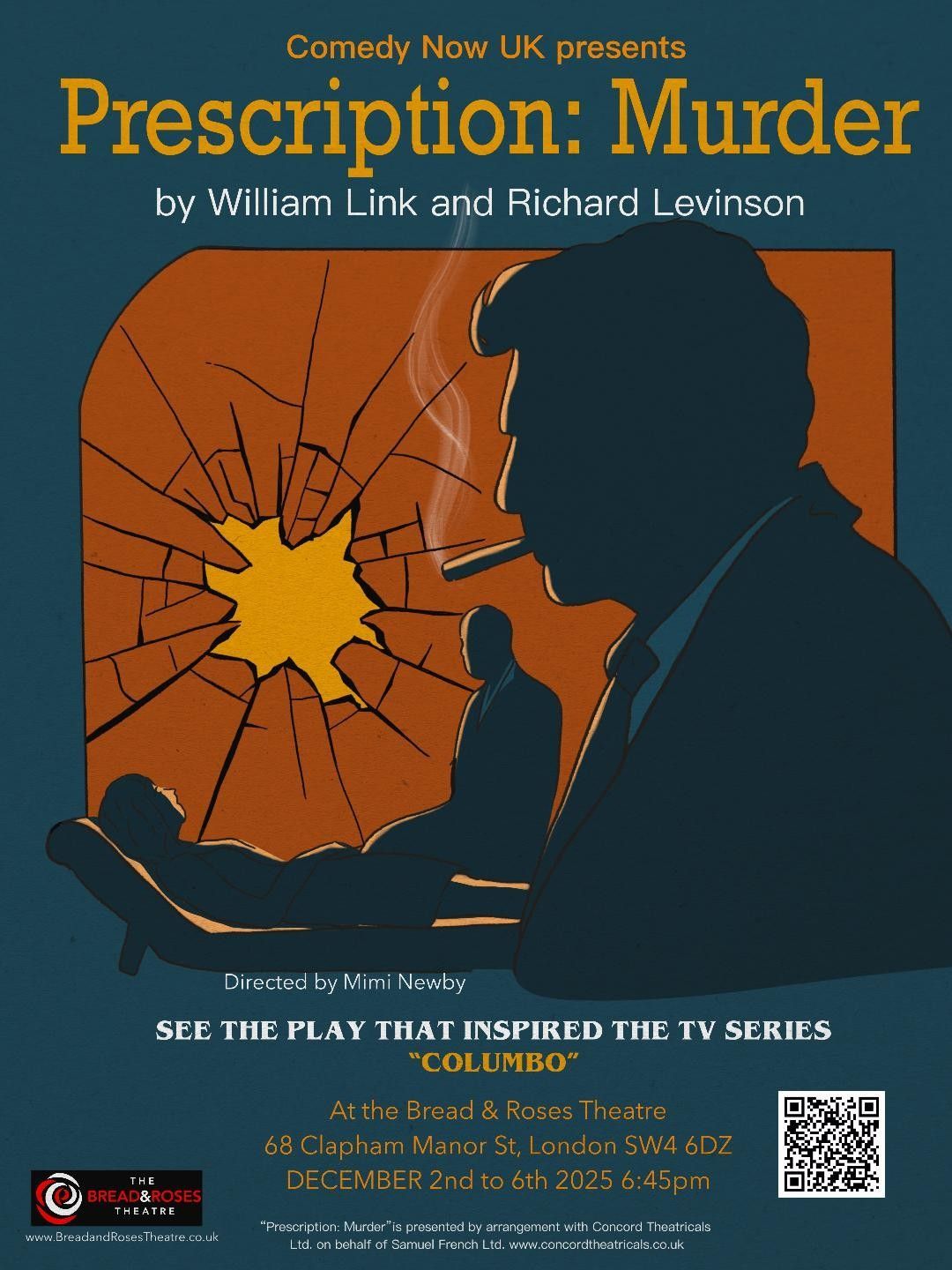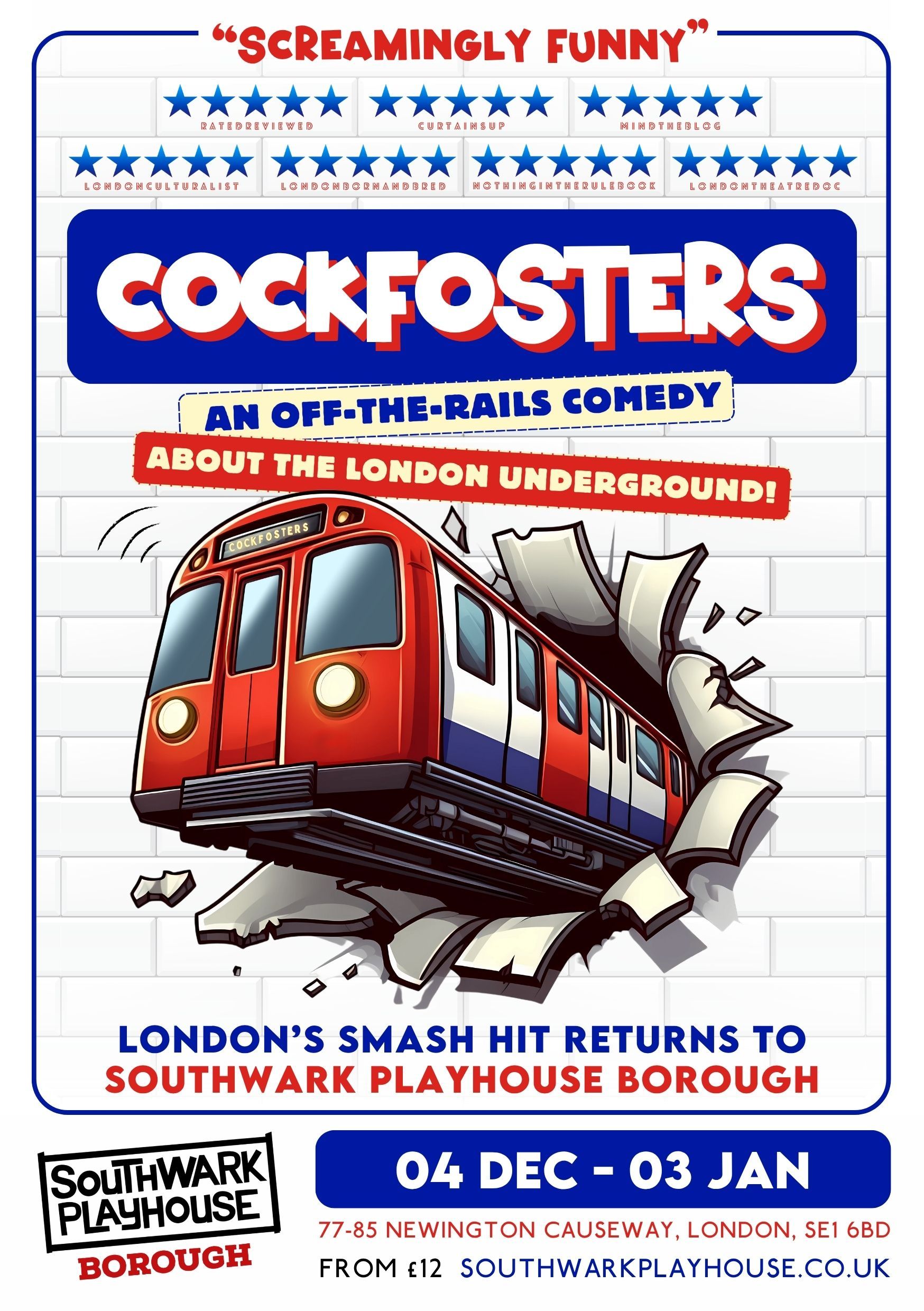Review: ‘The Argument’ at Barons Court Theatre 8 – 12 April 2025

‘An attempt to make the lines between audience and actor blur - but instead, the line was more muddled than blurred.’ ★★
Upon entering the venue, I knew this wasn’t going to be a typical experience. It was a fun welcoming: being offered a mysterious shot of blue fizzy liquid, loud music playing, and a photographer roaming around taking pictures with the audience. Such a welcome plants an intriguing seed in your mind - curious and excited to see how the next 60 minutes will grow.
Performers Alfie Lanham-Brown and George Abbott greeted the crowd with playful charm, setting the tone for an evening that blurred the lines between performance and provocation. They kicked things off by revisiting a scathing review of a past production, using a slide deck to dissect the feedback with tongues firmly in cheek. Despite other positive responses, they explained, this particular critique had sparked their new show. The premise: three live arguments over the course of an hour, the last of which would be entirely shaped by the audience. This concept had real promise, and the audience-driven format brought a sense of unpredictability.
There were suggestions such as Lime bikes and climate change, yet it was ‘The Future of Theatre’ and ‘AI’ that were chosen as the topics of Debate 1 and Debate 2. At this point, the biggest strength was encouraging the audience to become accustomed to one another - in Debate 2 we were instructed to turn to fellow audience members to explain what AI was. This was fun: getting to bounce ideas off someone you just met. It was an enjoyable moment created by the structure the creatives had established.
Yet overall, both debates felt a bit clunky: people shouting over each other, the leads struggling to think on the spot with rebuttals, and the limited time of each debate creating a rushed atmosphere. I was hoping, overtime - with it being explained there would be three debates in the performance - that the dynamics between the leads and the audience would find their footing. However, everything changed. This was a play of two parts.
Suddenly, two audience members, sitting apart in the room, called out the same sentence at the same time. Now this is where things got exciting - audience members turning to each other, intrigued murmurings, and the reactions from the leads on stage. This clashing of sentences led to the revelation that these two “audience members” were actually actors, invited by the leads. This then sparked other “angry” and “annoyed” actors in the audience to reveal they were also planted. What we thought was reality was revealed as fiction. And with this revelation, the show had so much potential. So, it was such a shame that this potential wasn't reached.
The overall downfall was the structure established by the writing. With the leads acting as though they were trying to continue the show, ignoring their “annoyed” audience members for incorrectly allotting lines, they asked for another suggestion. An attempt to continue the show. My plus one called out ‘Keir Starmer!’ - to which one of the actors in the audience responded, ‘Hey, you stole my line!’ This caused fellow audience members to think my plus one was “in” on the performance too, looking at him suspiciously and asking him questions about what was happening in the show - questions, of course, he couldn’t answer. This dynamic was a grave error: attempting to create a plot that relies on real audience members spontaneously taking part, but then discouraging and confusing them when they do so.
Even during interactions between the leads and the audience-actors (when we were yet to know they were actors), I jotted down: ‘With the format of the show, it is only as strong as the audience’s responses.’ Now knowing these audience members were in fact actors, my thought shifted to: If you don’t create a strong enough structure that invites a space for the real audience to bounce off of, then the space remains empty - leading the structure to collapse in on itself. The show didn’t encourage people to turn to each other with a playful approach to this experimental theatre experience - it instead shifted people into confused and uncomfortable silences, not wanting to take part out of fear they’d be interrupting the surprise, pre-planned narrative of the show.
The show unravelled and crumbled: the shouting in the stands amongst the audience-actors erupted into a chaotic dance break on stage, with the cast screaming at the audience, ‘Get up and dance!’ - to which I don’t think anyone did. When this dance broke into a fight, there was a “surprise” visit from the harsh reviewer. This bit did give me a good laugh, yet the irrelevant chaos around it robbed the moment of its full potential for humour and meaning. It was so baffling and unstructured that when the cast stood in silence, pointing at the exit - a very simple signal that the play had ended and we were to leave - the audience just sat still, unsure if it was a literal cue to leave or another confusing turn in the constantly twisting narrative. Just like the blue drink I was offered at the beginning of the show, much of the performance felt irreverent and unnecessary - even the title left me perplexed, as no actual arguments occurred.
Experimental theatre should always be encouraged and advocated for - and I truly applaud the creatives for thinking of this idea. The idea of discussing what the future of theatre can be, exploring the concept of blurring the lines between audience and actor, is incredibly exciting and offers a unique experience for audiences in today’s theatrical climate. The metanarrative of choosing to have a debate about ‘The Future of Theatre’ and then revealing to the audience that this is an attempt at such a future is a bold and creative move that I greatly appreciate. This concept is undeniably fresh - yet, unfortunately, the execution was weak.
CAST
Alfie Lanham-Brown
George Abbott
Lilybella Bayliss
Giles Beattie
Sahera Chohan
Daniel Drema
Jared Denner
Elliot Ferris
Alexander Gordon-Wood
Sam Murphy
Agata Nielsen
Sonja Seva
Aaron Thakar
Ben Woodward
Hiwet Zamelak
CREATIVES
Director: George Abbott
Producer: Margot Cadic
Stage Manager: Ruby Scott
Light and Sound Operator: Alexis Childs
Photographer: Tomos Ody
Graphic Designer: Katie Sharp
Theatre Company: Spare The Rod







